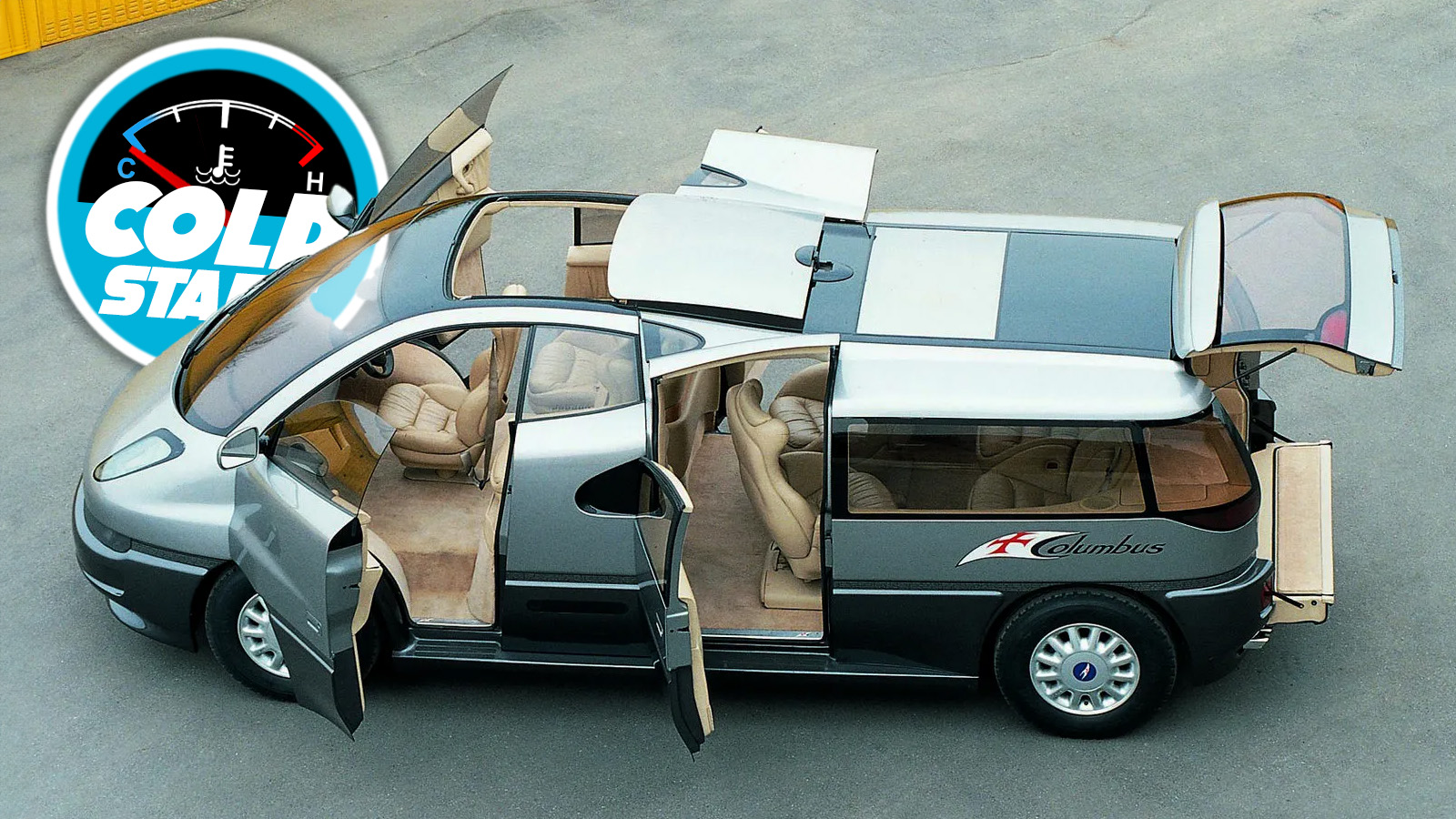If there’s one word that’s defined 2025 so far, it’s uncertainty. In the car world, the tariff threat from the White House has everyone shook up, and what do people do when fear of shortages and higher prices looms? They buy. Yeah, April seems like a banner month for new car sales, and the big winner so far might be the brand your grandparents drive.
At the same time, Mercedes-Benz has caused some controversy in its charging strategy for the CLA EV, Ram is bringing back a sensible trim of its half-ton pickup truck, and Jeep is hitting pause on Gladiator production. All this coming up on The Morning Dump.
Everybody’s Been Panic(-buy)ing

April was a weird sales month for new cars in America. With an unusual tariff strategy threatening to hike the costs of everything automotive from repairs to new cars to used cars, people were panic buying. I get it, I’m also people, and I bought a BMW 335i on a whim at the beginning of the month. Granted, circumstances were a little different there, but uncertainty in the market certainly helped me sleep at night after blowing that sort of dough in one go.
Of the seven automakers that still report monthly sales rather than quarterly sales, all of them saw volume increases for April, some huge, some small. While Subaru only saw a 0.3 percent increase, that’s coming off the back of a record month which left the brand with 49 days of inventory, according to the analysts at Cox Automotive. Still, Toyota and Lexus had even less inventory—11.8 days for Toyota as per Automotive News—and those brands posted respective gains of 7.9 percent and 23.5 percent to 197,871 units and 35,174 units.
Speaking of Japanese brands, Honda and Acura posted some significant increases, the former up 16.6 percent to 123,637 sales and the latter up 33 percent to 13,019 units. Not too shabby at all, but as far as Japanese automakers go, it’s pretty good to be Mazda right now, posting a 21 percent sales increase to 37,660 units. As for Korean brands, Hyundai saw sales increase by 18.8 percent to 81,503 units, Kia saw a 13.8 percent increase to 74,805 units sold, and Genesis is up 14.5 percent to 6,307 units sold, and that rounds out reporting car brands from Asia.

Here’s a contrast from two automakers that used to be joined at the hip: Buoyed by hot models like Broncos and Mavericks, Ford posted a big 15.1 percent sales increase while Volvo largely stayed the course, reporting a more modest 5.2 percent sales increase to 11,160 units.
The biggest winner in all of this tariff fracas so far looks to be Lincoln, with the brand posting a 40 percent month-over-month jump in sales to 11,615 units, overtaking Volvo in the sales charts. Aside from the made-in-China Nautilus, it’s actually positioned well for dealing with potential tariffs, with the Corsair, Aviator, and Navigator all made in America. It also helps that Lincoln had 127 days of inventory heading into April, so people looking to panic buy could just walk onto a Lincoln lot and make a choice, rather than having to settle.
So where do we go from here? Well, despite a spike in April, I wouldn’t expect to see record high cars sales this year. While some of the sales gains can be attributed to panic-buying, a portion of them are likely consumers moving up their new vehicle timelines. In short, many of these consumers would’ve bought cars this year anyway, so sales in April could have effectively stolen from later months.
Words from industry insiders give some credence to this hunch. Dave Christ, head of the Toyota division in America told Automotive News, “The first couple days in April was a frenzy, then it slowed to a more normal pace. It could be we pulled forward all the business that was there, because that frenzied pace is not a frenzy anymore.” With a claimed consumer slow-down to more normal levels coupled with the yet-to-be-seen full effects of auto tariffs, it wouldn’t be surprising if 2025 balances out to near-normal or below-normal new vehicle sales on the whole, meaning if you’re looking to buy a new car soon, it’s not a bad idea to hop on non-tariff-impacted inventory now as affordability may be changing.
Mercedes-Benz Might’ve Already Screwed Up The New CLA

Launching a new EV on an 800-volt architecture is fantastic, because it means really fast charging times on a 350 kW charger. However, Wards Auto reports that in certain markets, the new Mercedes-Benz CLA EV only has an 800-volt architecture, and that’s a problem. See, most older DC fast chargers are based around a 400-volt architecture, as kW in DC is equal to amps times voltage divided by 1,000, and running higher amperage is how Tesla optimizes their 400-volt DC fast chargers. Most vehicles with 800-volt architectures use DC-to-DC voltage boosters or split battery pack strategies to work with 400-volt fast chargers, but that’s not what’s happening with the electric CLA in Germany, Austria and Switzerland, as the CLA configurator in those markets displays the following warning:
Please note that charging at 400V charging stations is not possible, and for this reason, they are not shown in the navigation system.
Unsurprisingly, this new has resulted in mixed reactions on social media, with posters in the German Elektroautos subreddit raising some good points. Some note that 400-volt stations are rare around them while some raise the good point that the CLA is an entry-level EV for Mercedes-Benz and this limitation in charging station compatibility could sharpen the EV learning curve for those coming from combustion-powered cars.
While eventually, 800-volt-compatible DC fast chargers will be the universal minimum, the world isn’t quite there yet, so it’s quite possible Mercedes-Benz jumped the gun with the CLA EV. At the same time, equipment specifications in European markets don’t necessarily translate to North America; it would be a miss if the eventual U.S.-market model doesn’t offer compatibility with older chargers.
The Ram 1500 Express Is Back

Speaking of affordability, with consumers already stretched on new vehicle pricing, now’s a good time to bring some affordable trims back into the mix. Remember the Ram 1500 Express, a base-model half-ton pickup truck with alloy wheels and body-color trim? It’s back for the 2026 model year, and it seems like an alright deal. For $44,495 including freight for a quad-cab or $47,245 for a crew cab, you get 20-inch alloy wheels, adaptive cruise control, a 3.6-liter Pentastar V6, dark-finish headlights, and enough monochromatic trim to look like a more expensive truck than it is.
Of course, there is an options list, and the two big ones to watch out for are four-wheel-drive and the 420-horsepower Hurricane turbocharged inline-six. The former is a $2,095 option and the latter adds $1,695 to the price tag, and I’d expect most in-stock models to feature at least four-wheel-drive paired with the $995 Black Express package, which adds different cloth upholstery, front bucket seats, a seven-inch screen in the gauge cluster, and black wheels and badges. From where I’m sitting, it seems in the right price bracket to compete with the similar-in-spirit Ford F-150 STX, and it’s the sort of trim Ram needs after the rapid Trimflation of the Carlos Tavares era.
Jeep Hits Pause On The Gladiator

The Jeep Gladiator pickup truck is one of those vehicles that’s not objectively great at anything, and yet, I like it. The bed isn’t as practical as you get on a Tacoma or Colorado, it wanders like a kite on the freeway, it has a Churchill-like thirst, it’s noisy, it’s unrefined, it’s not as capable off-road as a Wrangler since it’s so dang long, and it’s no longer available with a manual transmission, yet there’s something fun about a convertible pickup truck. I smile every time I see one, because someone made a fun choice.
Unfortunately, if you want to make a fun choice and go with a Gladiator, you might want to do so soon. The Detroit News reports that the south plant in the Toledo complex, the line on which Jeep’s truck is built, is hitting pause. As Stellantis told the media outlet, the firm is looking to “align parts inventory with demand,” which makes sense considering leftover 2024 model year Gladiators are still on dealer lots into the second quarter of 2025. It’s the latest in several Stellantis production pauses, and it’s likely to have a brief but noticeable effect on suppliers. While some may be building up parts supply, some may be temporarily halting work.
What I’m Listening To While Writing TMD
It’s been a while since I had a birthday fall on a Monday, but here we are. It’s not an especially important one, although it does mean I’m closer to 30 than 20, not that it really matters beyond a point of contemplation. In short, it’s mundane, and celebrating on such a regular threatening-rain day requires a tricky sonic balance. How about vaguely melancholic garage remixes, like the Badger remix of Julia Wolf’s “In My Room”? Given the weather, it feels appropriate.
The Big Question
Did you think about buying a car last month, or even pull the trigger on a new ride?
Top graphic credit: Lincoln








I was happy to take advantage of the uncertainty. Carvana offered me damn near what I paid new for my Maverick. I have less need for a pickup than when I bought it and I was yearning for a sporty family car since my wife transitioned to a 3 row crossover.
Tesla prices have plummeted so I grabbed a Model 3 Performance with only 13k miles for less than I got for the Maverick. Swapping a ~$30k vehicle for a ~$60k vehicle with the same miles even up is a win in my book. And its already my favorite non-track car I’ve ever owned.